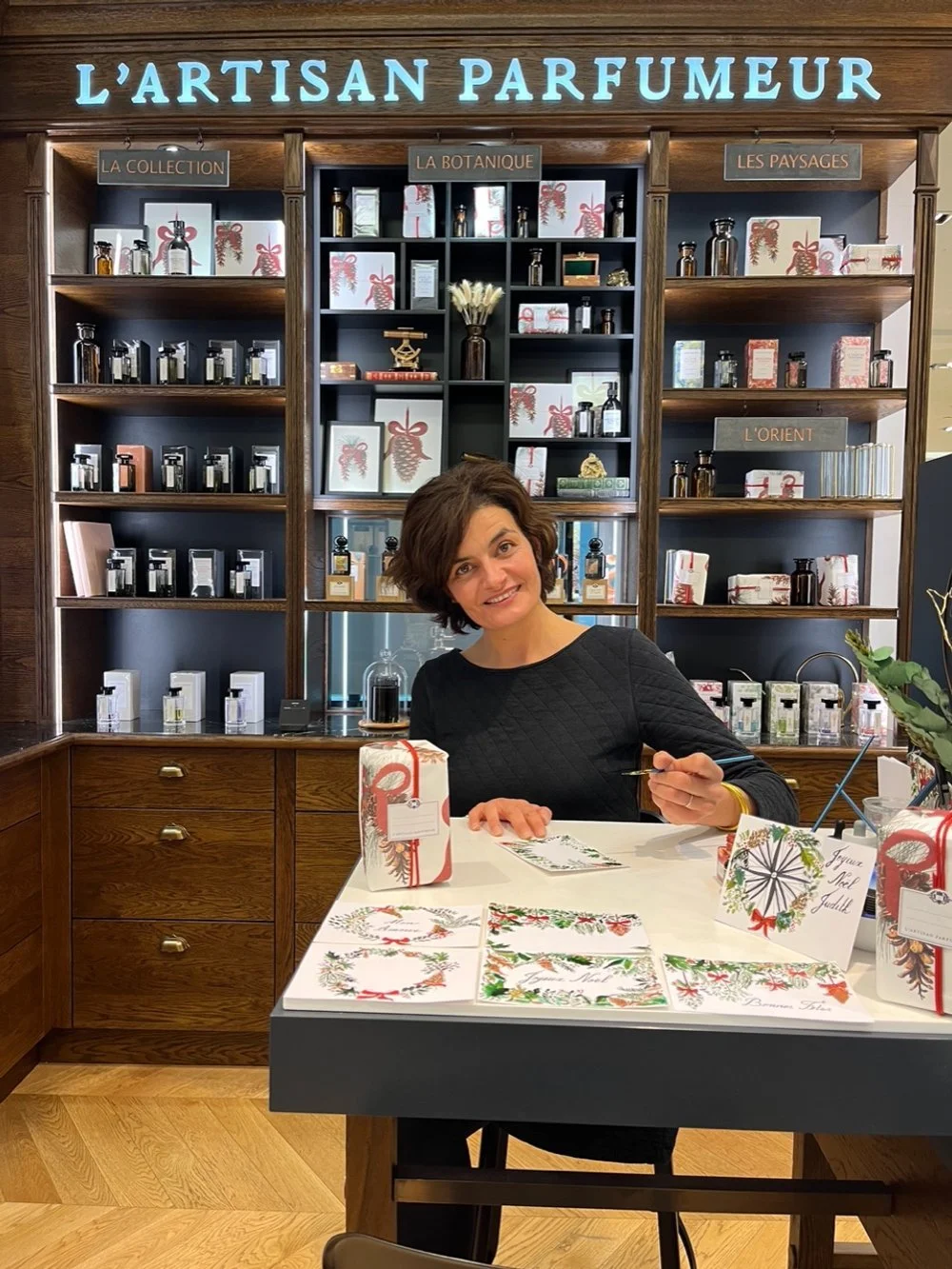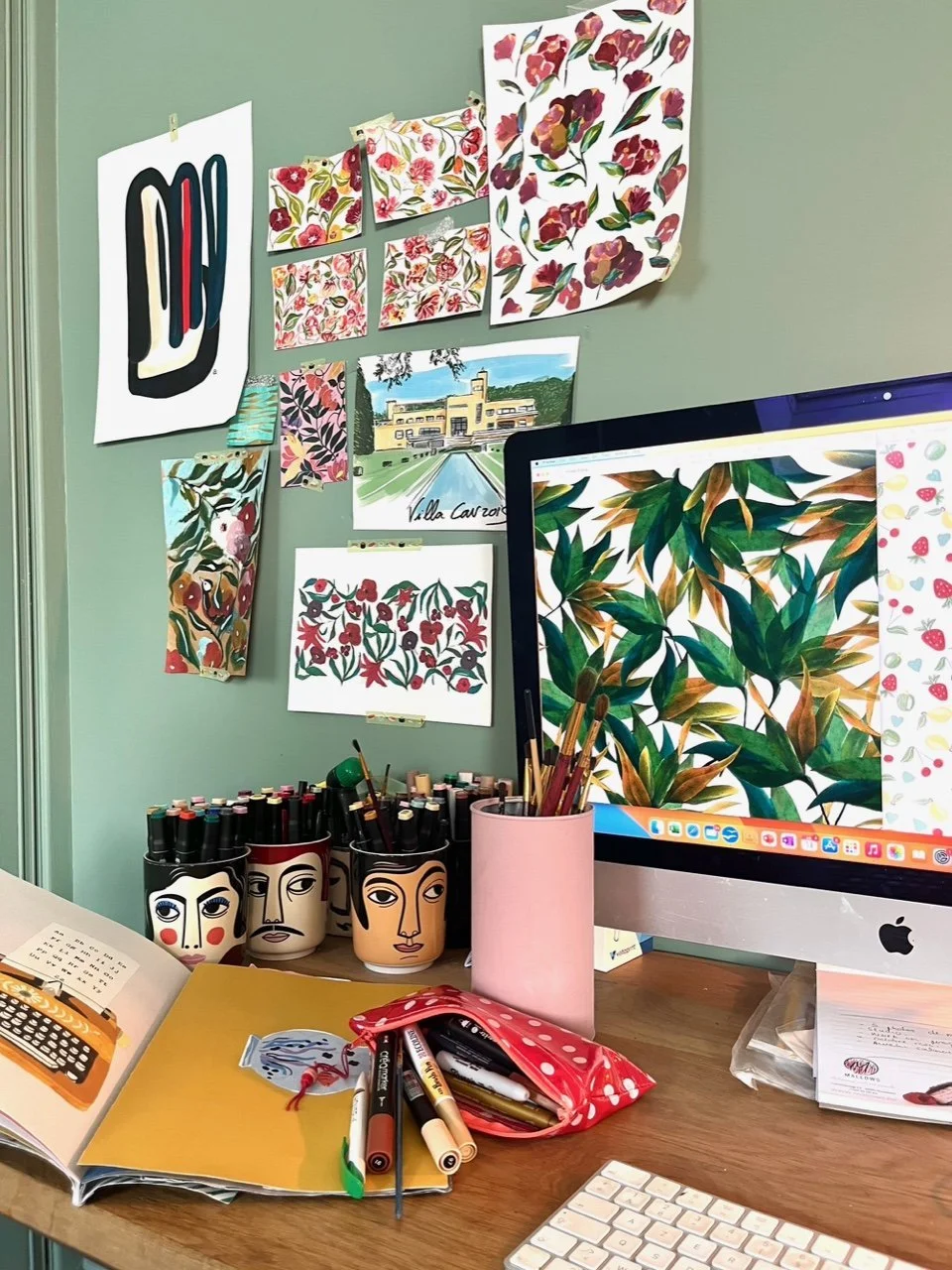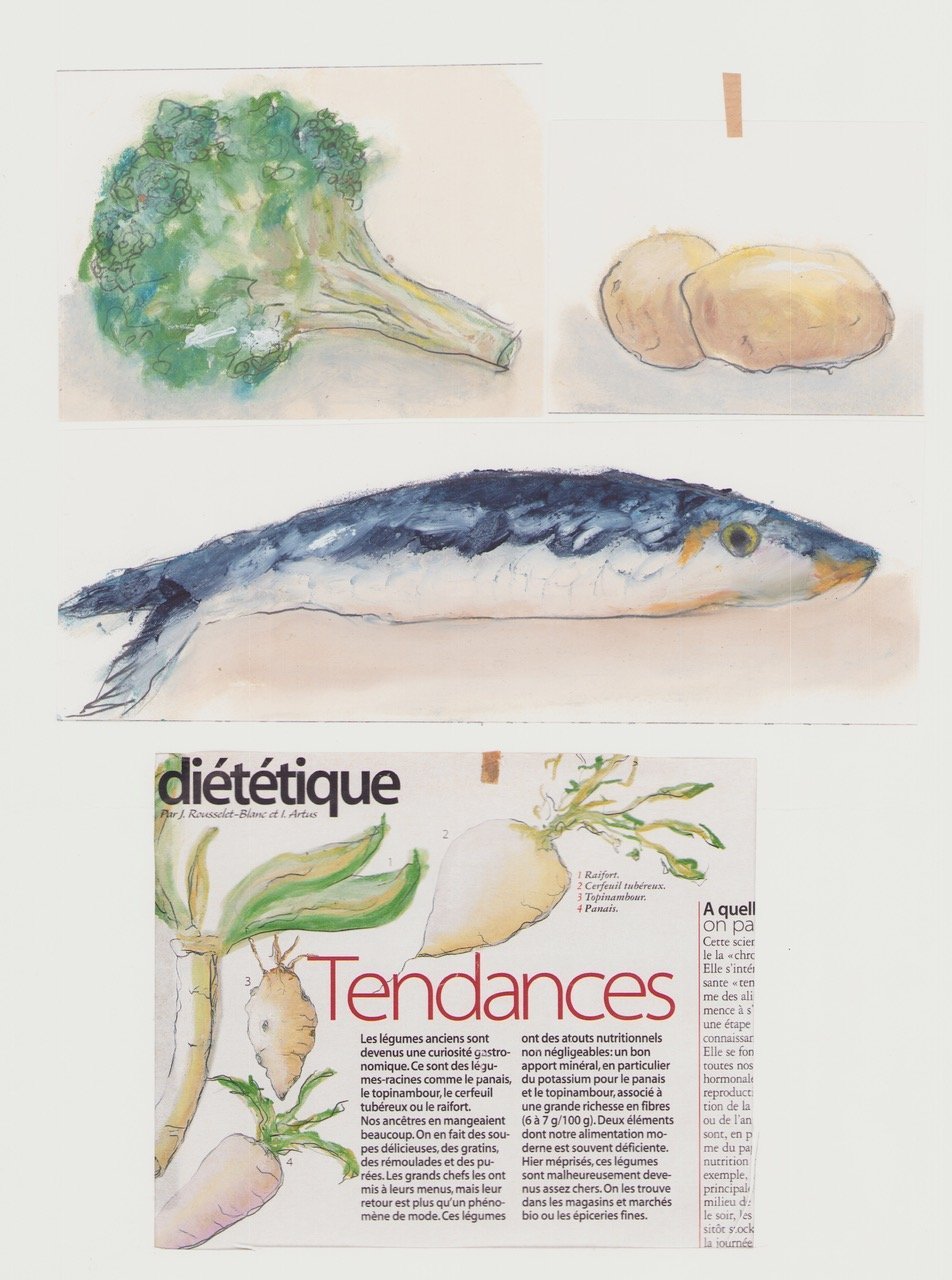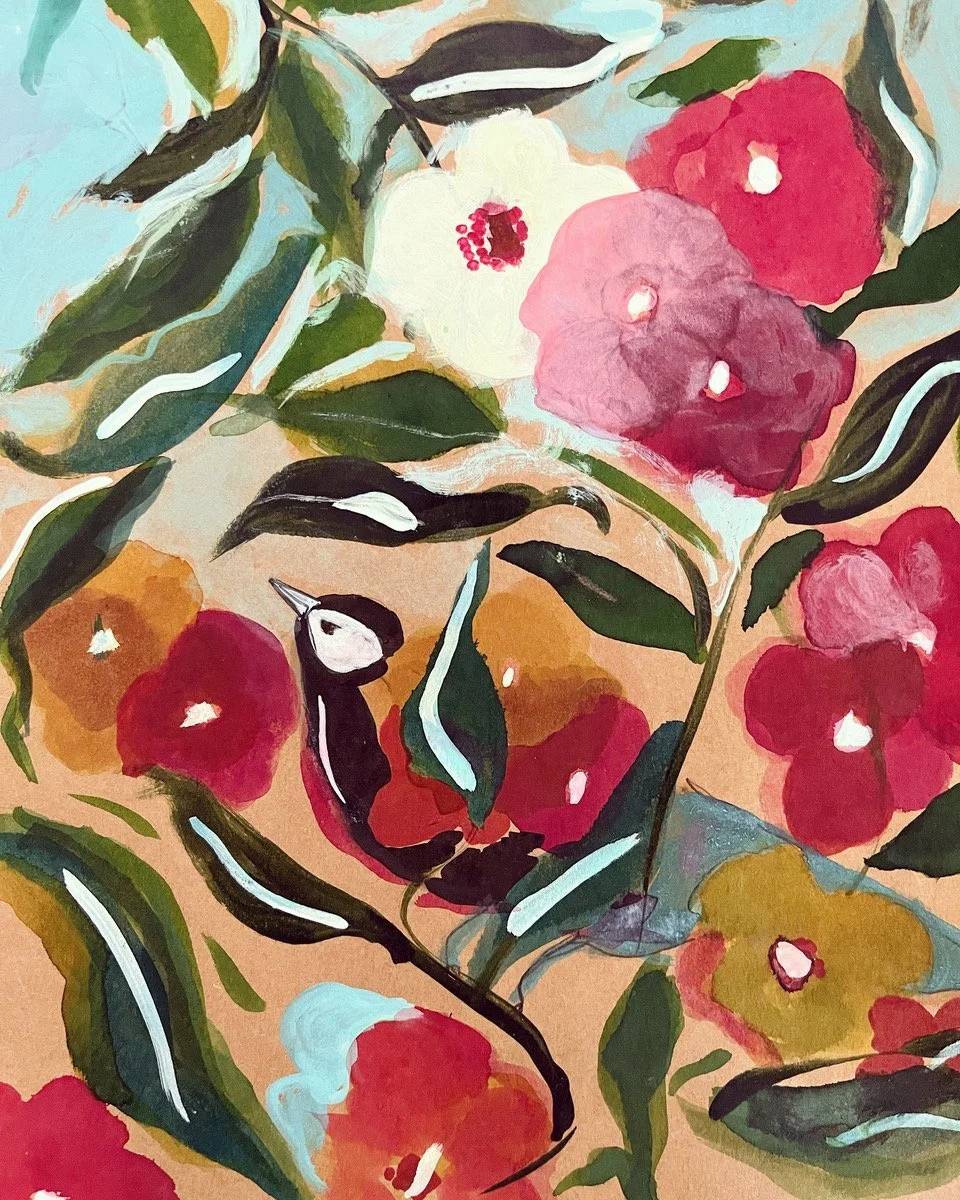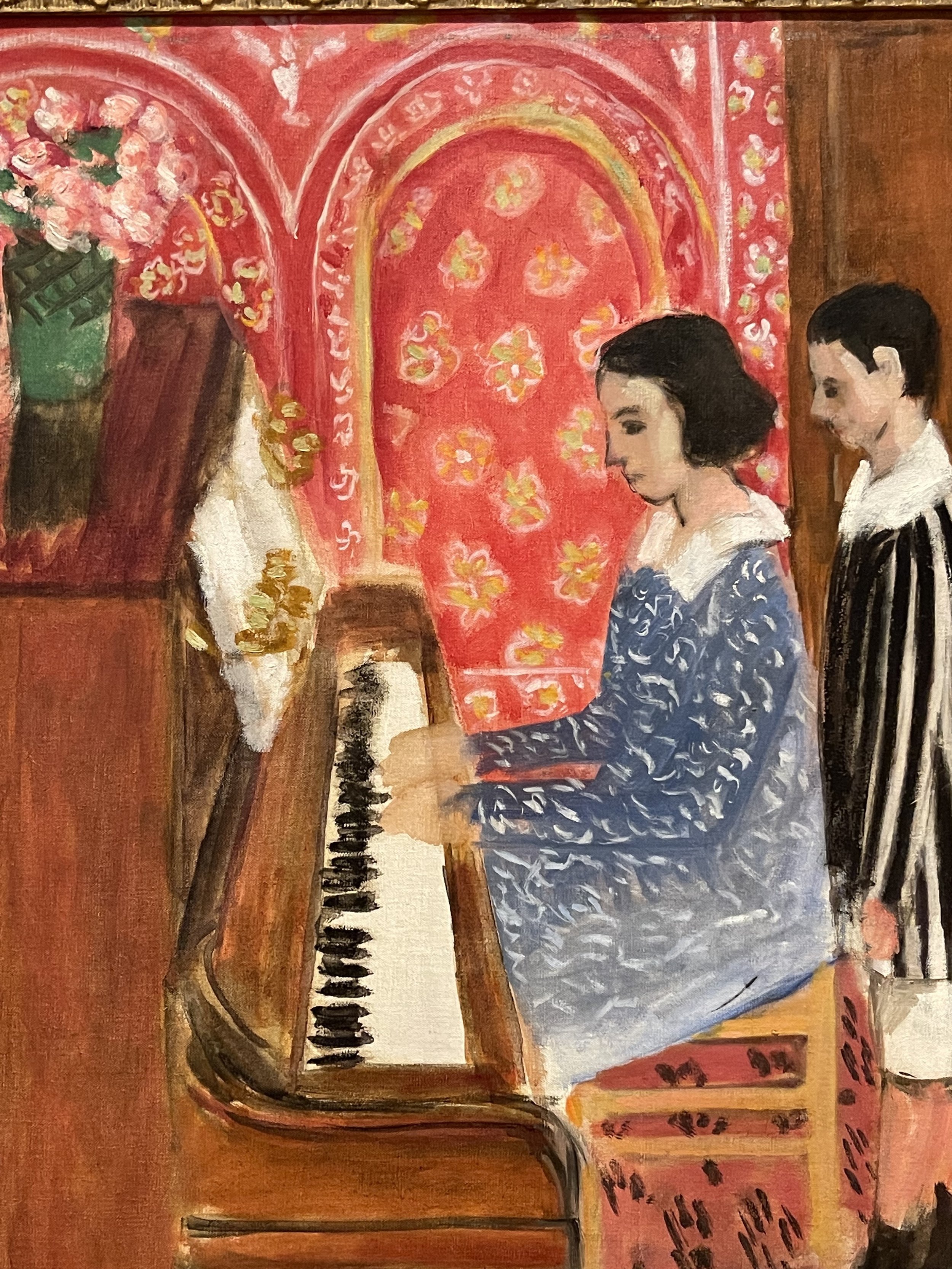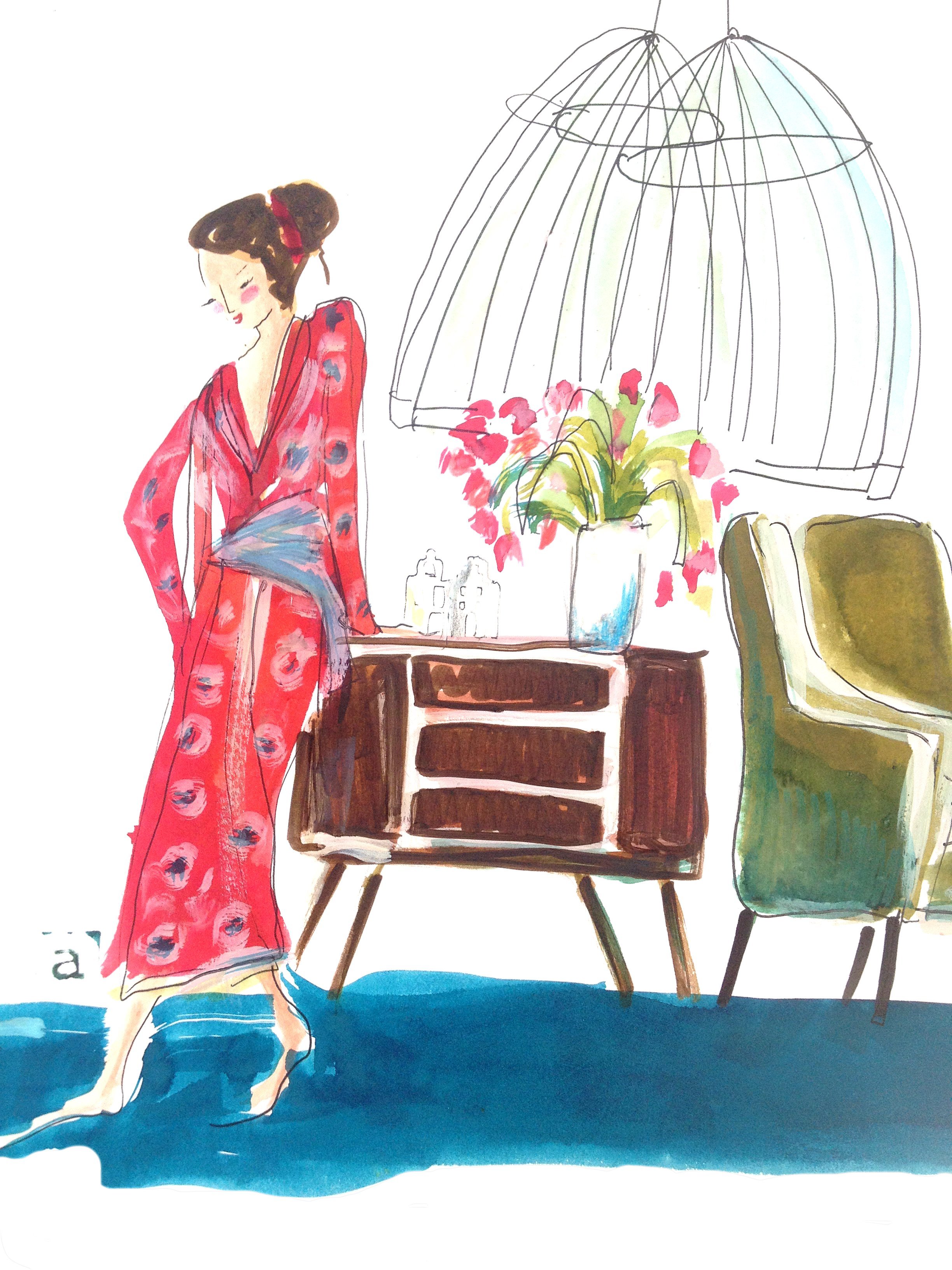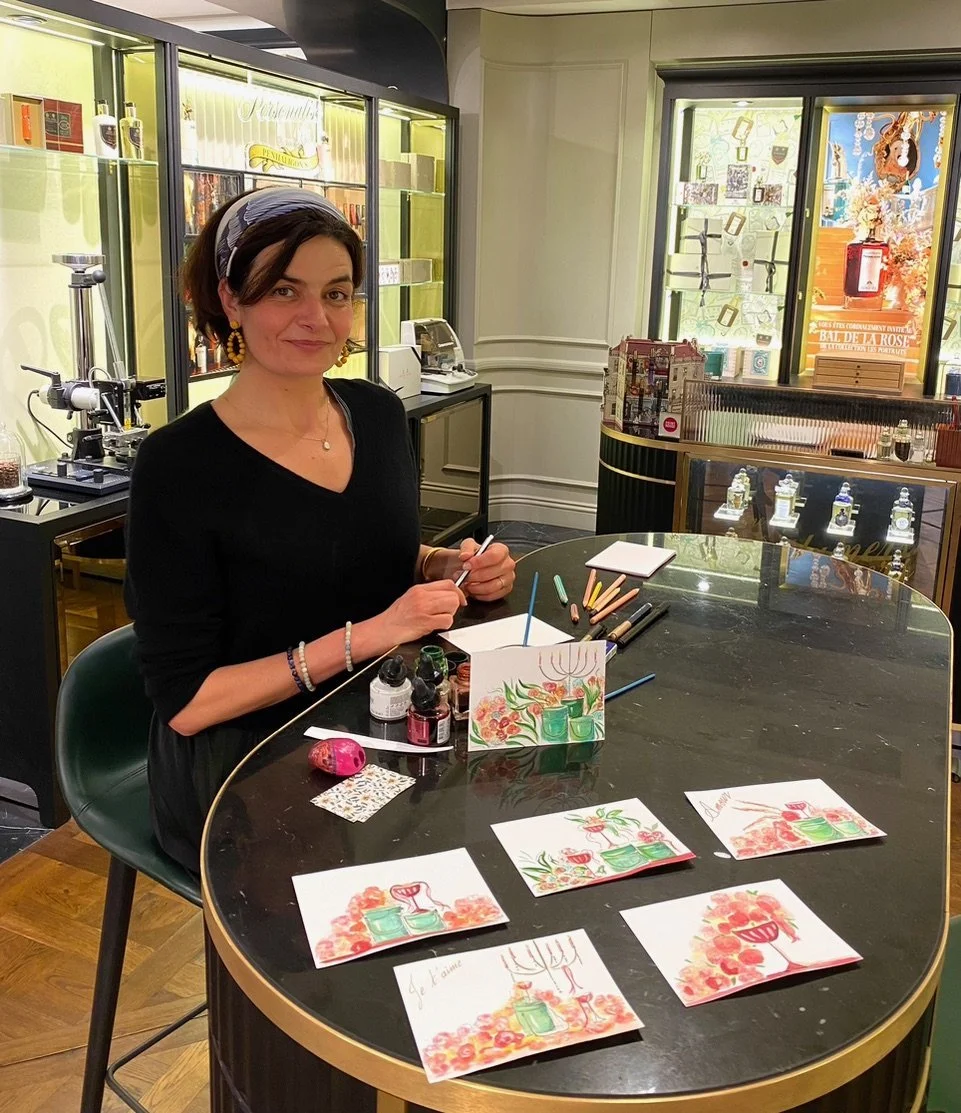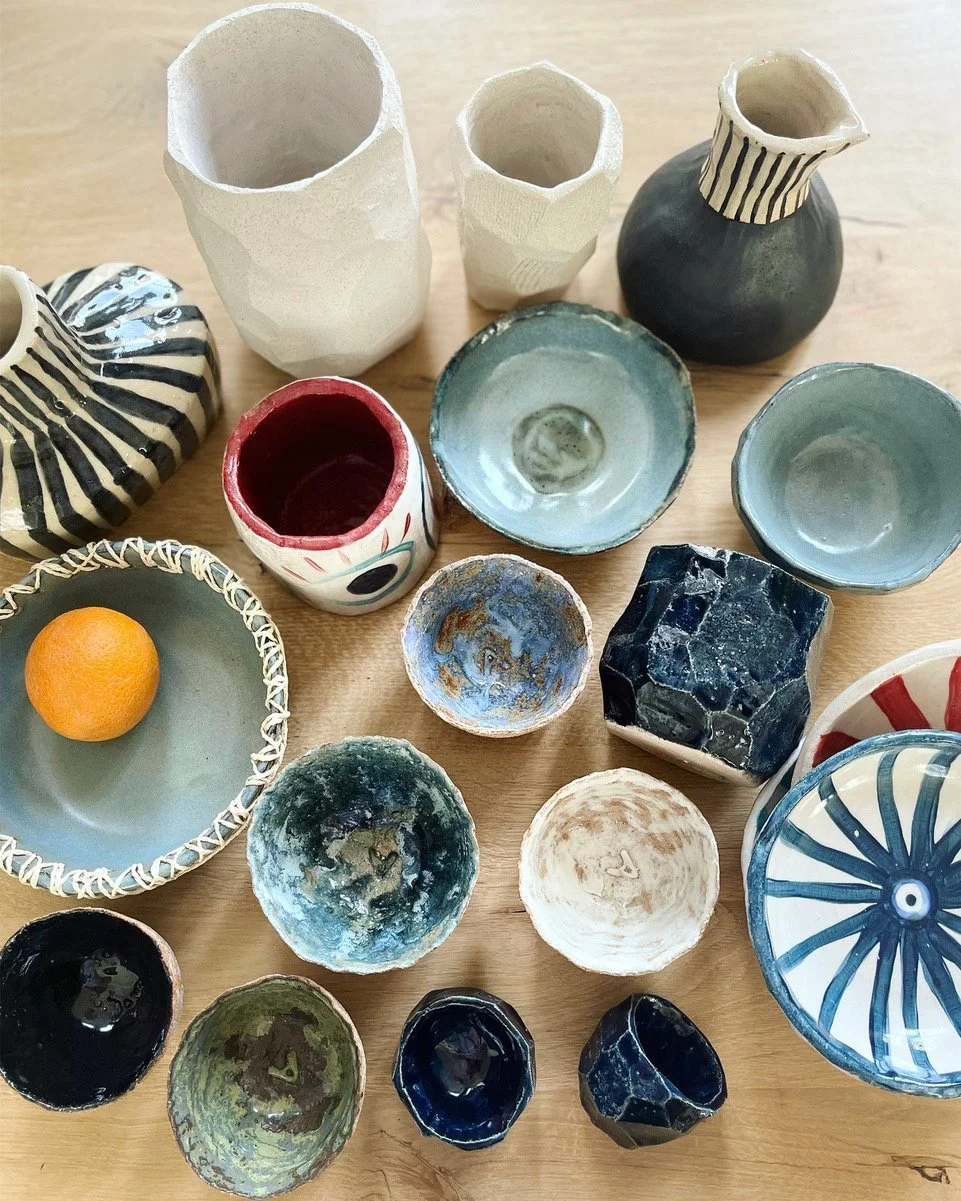Salon Interview: Aurélie Salmon Lahad
TRAVEL & CULTURE SALON
in conversation with
Aurélie Salmon Lahad
October 5, 2023
When I first started dreaming up this interview series, I immediately pictured Aurélie Salmon Lahad as my first guest. Aurélie is a freelance illustrator based in Lille, France. She lives there with her husband, two daughters, and their labrador, Elvis. She and I met about ten years ago when we were both ex-pats in Amsterdam. Our children attended the French lycée together, and our daughters were friends.
From afar, I admired Aurélie’s quiet, sophisticated manner. As I got to know her, I was taken with her kindness and talent. Her artwork is joyful and chic, evoking a sense of tranquility. One of my favorite gifts was a small hand-drawn illustration of Amsterdam that Aurélie gave me as a going-away present when our family moved back to the U.S.
A couple of years ago, I reached out to Aurélie to help me come up with a signature look for my new business. She designed the logo for Travel & Culture Salon and the cover art for all my courses. We’ve been working together ever since!
I was excited to invite Aurélie to kick off this interview series to highlight her beautiful artwork and hear more about her journey as an artist. I’m grateful she talked candidly about moments of feeling stuck and insecure. We all have self-doubt, and Aurélie’s story reminds us that it’s okay to go ahead and believe the people who are telling us we’re doing a good job. Her story also reminds us that the path to living our authentic selves may be characterized by periods of stepping back, along with moments when we harness budding confidence and go for it. Even if we’re terrified.
Most of all, Aurélie’s story is about appreciating the beauty of the everyday—la vie quotidienne.
Aurélie conducting an atelier in collaboration with a French perfumery.
Heather: Bonjour Aurélie. This is such a treat for me! Thank you for sitting down with me today. You studied fashion design in Paris, painting in Milan, and now have a successful career as an illustrator. Can you share a little about where you grew up and your path to becoming a professional artist?
Aurélie: Bonjour, Heather. Thank you so much. It’s wonderful to connect in this way. I come from Paris and from an artistic family. My father worked but was also a painter. My grandfather was a doctor and also a painter. For all of us, the arts were just a part of life. My parents, for example, regularly took my sister and me to museums and exhibitions. From a very young age, I received an artistic education at home.
Aurélie’s home studio
I loved to draw, though I had no idea what type of job I wanted. Around sixteen or seventeen years of age, I had ideas of becoming an architect but, unfortunately, I was quite bad at math. Therefore, not a great option! Instead, I turned my attention to fashion design and was accepted to ESSA Duperré (École Supérieure des Arts Appliqués Duperré or The Duperré School of Applied Arts) in Paris. It’s a very prestigious school, at the same level as Parsons in New York City or St. Martins in London. Then, following a year of studying painting at the NABA (The Nuova Accademia di Belle Arti or New Academy of Fine Arts) in Milan, I returned to Paris and realized the fashion world wasn’t for me after all. I found it to be too superficial, too frenzied. I realized how much I loved to draw and that freelancing as an illustratrice suited my personality better.
Travel & Culture Salon logo, illustrated by Aurélie | ©Travel & Culture Salon
Heather: I imagine it was intimidating and challenging to find work as a young and independent illustrator.
Aurélie: I had a lot of fear! I still do. I’m shy and introverted. This is partly why the fashion world did not suit me. Yet, for a period of six months after returning to Paris, I relentlessly knocked on doors and finally got my first contract doing illustrations for a French newspaper. This was the beginning of the whole story. This job led to bigger jobs with well-known women’s magazines, like Elle, Madame Figaro, and Marie France. Meanwhile, my sister Delphine and I were working on the outlines of a home decoration shop, and in April 2003, we opened a boutique in Paris. For five years, I divided my time between the shop and my work as an illustrator, but to answer the growing demand for my illustrations, I decided to completely focus on this passion. I’m someone who loves to try different things and so this was an exciting period in my life, one that was filled with opportunity.
Heather: Two things that immediately attracted me to your work are your beautiful use of color and the way your illustrations are filled with “joie de vivre.” Where do you find your inspiration?
Aurélie: I admire many great artists, but especially Matisse. Matisse is a source of enormous inspiration for me. His drawings and paintings, specifically, not the paper cuts. When he painted, I believe he felt very free. His women, for example, are not very academic. It’s wonderful. The colors are beautiful, the shapes. When I’m asked to draw something, I often look at Matisse’s works of art for inspiration. And, oh wow! His paintings are very decorative. For some, that’s not a compliment. But for me it is. I like the details of the fabric of a woman’s dress, for example. Everything in his work is très travaillé, detailed, decorated, and with lots of color. This is important.
Piano Lesson [detail], Henri Matisse, 1923, Musée Matisse, Nice, France. Photo by ©Travel & Culture Salon
Heather: Pablo Picasso, a contemporary of Matisse, was known for his politically engaged art, whereas Matisse’s work did not carry such messaging, and as you mentioned, is often characterized by its emphasis on color, form, beauty, and aesthetically pleasing compositions. In today’s politically charged world, there seems to be pressure to do art with a message and to use social media for this purpose. How do you address this tension in your creative work?
Aurélie: Yes, some people don’t view decorative painting in a positive light because it’s not intended to defend a cause or challenge the status quo–it just looks good hanging in a room of an apartment. But for me, this is a positive. Matisse’s work, simply put, is beautiful.
My own work is a reflection of the things I love. Above all, the simple pleasures in life. I like capturing the quiet moments, a sense of well-being, la vie quotidienne. I have my opinions, but I don’t want to be provocative. I don’t want to draw something for the punch. That’s not me. For example, I love to draw women and highlight women. But it’s normal everyday femininity that inspires me. I’m not looking to get an overtly feminist message out there.
Heather: At one point, you moved to Amsterdam, where I had the pleasure of first getting to know you. Living abroad has its ups and downs, but I think many ex-pats consider the experience to be a defining one, a turning of the page, so to speak. How would you describe your experience?
Aurélie: Amsterdam was a completely new beginning! Amsterdam is so inspiring and every day was an experience. I love to travel and get lost in a place. In Spain, where we often spend time in the summer, I’m always discovering something new. I’m shy, but I love to see how other people live in their country, to smell new odors, to taste new flavors, to learn new words. Living in Amsterdam, every day was a travel day. Since I wasn’t working when we first arrived, I took time for myself. I visited museums, for sure, but I also let myself get lost with my sketchbook in the streets and in different neighborhoods, drawing the life of the city.
“Living in Amsterdam, every day was a travel day.”
It was like therapy, really. Drawing brings me a great deal of joy, but for a long time, I had been only drawing for customers. Working for magazines and for the press allows for some degree of creativity, but it is fast-paced and repetitive. I was doing the same things over and over again, like a drawing about cooking or something about the economy or something with makeup. This work opened many doors for me, but I had begun to feel caged and bored. When I got to Amsterdam, I started drawing for myself again. I rediscovered drawing as a hobby, and the freedom of those early days in Amsterdam helped open my mind to the possibility of other artistic endeavors.
I said to myself, ‘Okay, new city, new life, now a new job.”
Amsterdam Mood, © Aurélie Salmon
Heather: I love that in letting yourself get lost you found yourself. Did you have a sense of what you wanted to do next? Where did you find your confidence to start over?
Aurélie: I had lots of ideas. I wanted to draw illustrations for books, for example. Most of all, I wanted to work in textiles, designing patterns for fabrics. The challenge was that I had no legitimacy in textiles—no diploma, no experience. And I would have to redo my portfolio from zero. So that’s what I did. It was not a frantic time though. I started to meet people in the industry, but it all happened quite organically. This was not a period when I was knocking down doors but a time of reflection and having conversations. Building my portfolio.
Then, the most incredible thing happened. I took a job at the French lycée in Amsterdam teaching les arts plastiques (arts and crafts) to elementary school children.
Honestly, I started teaching to get out of the house. I’d been working all alone, all of the time. Then, suddenly, there I was with thirty children in front of me. Oh là là. But it was wonderful to work with kids. They have so much spontaneity, so much artistic spontaneity. It was amazing to observe. Of course, I have countless photos of their masterpieces on my phone!
Teaching also gave me credibility with the parents and my peers, with adults in general. I was recognized as an artist, which is a big label. I don’t like to say that about myself. But people were seeing me as that, like ‘Wow, you do a great job,’ and it felt so good. It was an important part of my time in Amsterdam. Indeed, teaching, while continuing my other professional work, was one of the richest creative periods in my life. Amsterdam opened my mind and gave me confidence.
“When I do textile design and draw patterns, I have the impression that I am in my place.”
Up to this point, I had a lot of fear about my textile designs. All I was thinking was that it was too hard, that I wasn’t qualified. It can be very technical. But the experience in Amsterdam helped me push past my inner critic. I reached out to several French fashion brands I love and proposed the idea of collaborating on a collection, and they said, ‘Oui, let’s go!’ Wow. I am very proud of that. All those moments of doubt, and at that moment I succeeded. I achieved something I really wanted to do. Now, I work very much in textiles.
When I do textile design and draw patterns, I have the impression that I am in my place. I am very comfortable drawing a pattern and know exactly the result I want to have. In a way, it’s as if I’m returning to my studies in fashion design. But, actually, that was just the starting point, and there were all these stops in my journey, leading me to something related but different from my studies. Leading me to something I love and adore.
Heather: Your sketchbook seems like an important part of your creative process. In fact, when I look at your beautiful Instagram account, it feels like I’m peering into your sketchbook, into your life through your drawings. Can you tell us more about how you work?
Aurélie: Oui, exactement! My sketchbook is a journal, my diary. I draw impressions that I’ve had or tiny scenes that can be funny or sweet. Especially of my family. I like to capture a certain way of living, the serenity in life. On Instagram, when I have time, I publish drawings of my life, little drawings of daily life. For example, I love to read on my couch next to my dog. It’s very simple, but it’s what I like. Something quiet and a sense of well-being. You won’t find photos of my life splashed across my Instagram account, just my sketches, which I think are actually a more intimate window into my world. It’s me. Not a phony exterior. There are lots of people like me, artists, and illustrators who are very introverted. Sometimes I feel naked in front of people when I post my drawings on Instagram. Even my profile image is a drawing.
Professionally, too, it starts with my sketchbook. Always with a pen and paper, fleshing it out. Always, always, always.
Heather: Once you have an idea drawn out, what does the collaboration process look like? As your client, I’m impressed with how you incorporate your own ideas and bring your unique look to a design, while still staying true to my vision. You can really run with it! In your mind, what is the most essential element for collaboration? How do you build trust with your clients?
Aurélie: Most professionals are used to dealing with artists and know it’s necessary to allow a little freedom to create. They’re easy. But it’s very difficult to work with someone who’s not used to artists, and nothing’s worse than someone who wants exactly the same idea they have in their head. I love it when someone says we need x, y, or z—now, go do what you want. For example, a client might simply say we need a textile design with spring flowers, then they let me go come up with something. C'est génial. But when someone says I want a red car and this and this, you lose the spontaneity. You can see it in the results. They look forced—worked and reworked and reworked.
Heather: In 2020, you moved from Amsterdam to Lille, France. How has the transition been for you personally and professionally?
Aurélie: Personally, it’s been a little hard. I often feel alone. I returned to my home country, yes, but I’m new to Lille. It’s a small city, and everyone’s known each other for a long time. No one is really looking to make new friends. Amsterdam was different because there were so many ex-pats. I found it important to look for ways to get myself out of the house again and got involved with several fun projects.
In one instance, I contacted a perfume brand to see if they wanted to bring me in for special events. They said yes, how about Christmas? So I represented the brand, conducting a little atelier during which I drew small notecards in-store, in front of the customers, which they could buy or were given as a thank-you for purchasing perfume. It was fun! It was a cool experience to practice my art in front of people and have to do it very quickly. It certainly didn’t leave any time for perfectionism. It was confidence-building, to be recognized in the moment for my work.
Just this March, I connected with Maison 123 on the occasion of International Women’s Day to decorate their retail windows with the mimosa flower, which has long been a symbol of the women’s movement. And, in late 2021, I illustrated my first children’s book!
Retail window design by Aurélie on the occasion of International Women’s Day, March 8, 2023, for the French fashion brand Maison 123. The mimosa flower has been a symbol of the fight for women's rights since 1946.
All these experiences offered a chance to surround myself with people and gave me more creative outlets. I’m especially thrilled about the time I spent doing ceramics this year, although this wasn’t for my job. I’d been working a lot, and ceramics was a chance to take time for me. I’ve always wanted to create objects, and ceramics presented a new artistic challenge, having to work with my hands in three dimensions. Above all, for me, it is incredibly rewarding to work with clay, with the earth. I care deeply to have a relationship with nature and the earth. Anyway, I now create objects. Sometimes they are horrible, and sometimes they are a revelation! It’s recreational.
Heather: It’s been a delight to sit down and chat with you. Do you feel we’ve covered everything?
Aurélie: I suppose we haven’t talked about the future. But, honestly, I don’t know where I’ll be in one year or in two years. I’m forty-six now, and I try to live every moment of every day. I try to be present. There’s a saying—I won’t get it totally right—that someone who is a simple person is a good person. This is me. I don’t need the extraordinary. I strive to live a simple life, to be kind and good. To pay close attention to la poésie et la douceur de vivre (the poetry and sweetness of life).
Heather: Merci beaucoup, Aurélie. It’s a joy to call you a friend and to work with you professionally. I’m so excited about this opportunity to share your story and gorgeous artwork with my readers. Thank you for being the first guest in my new interview series.
To learn more and connect with Aurélie, be sure to visit her website and follow her on Instagram.


